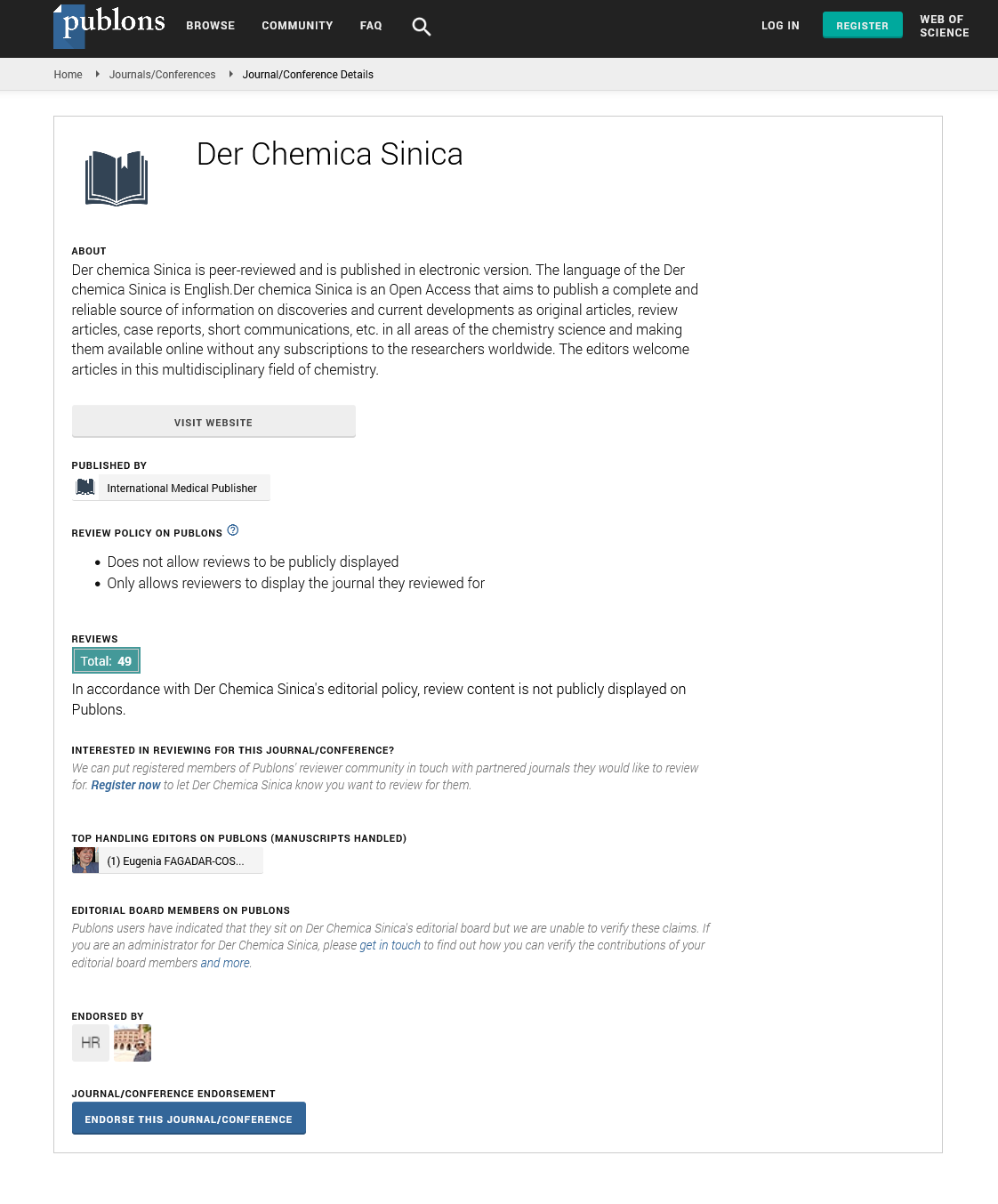ISSN : 0976-8505
Der Chemica Sinica
Abstract
Biosorption of Cr(VI) and Ni(II) from aqueous solution onto Bacillus subtillis immobilsed in Agarose gel
The objective of this study is to investigate the removal efficiency of Cr(VI) and Ni(II) by Bacillus subtilis immobilized in agarose gel from aqueous solution under different experimental conditions. Batch mode experiments were carried out as a function of solution pH, Cr(VI) and Ni(II) concentration and contact time. It was found that the equilibrium of the process was reached after 60 min. The optimum pH value was found to be 4 for Cr(VI) adsorption and 6 for Ni(II) adsorption. Bacillus subtilis immobilized in agarose gel was found to posses relatively high sorption capacity for Ni(II) compare to Cr(VI). The data obtained from the equilibrium experiment were analyzed using Langmuir and Freundlich isotherm models. The equillibrim data fitted the Langmuir model better than Freundlich with high correlation coefficients for both adsorbate. According to the Langmuir model, the maximum uptake capacities (qe mg g-1) of the biosorbent used for Cr(VI) was 31.77 ± 0.03 mg g-1, 33.64 ± 0.53 mg g-1 and 39.78 ± 3.14 mg g-1 at 298K, 308K and 318K respectively and for Ni(II) it was 64.94 ± 0.01 mg g-1, 72.61 ± 2.32 mg g-1 and 78.13 ± 0.61 mg g-1 at 298K, 308K and 318K respectively. This showed that there was increment in adsorption capacity with increasing temperature and this indicated that the adsorption process is endothermic in nature. The pseudo first order and pseudo second order kinetic models were used to describe the dependence of the adsorption on time. The kinetic data fitted with the pseudo second order kinetic model with high correlation coefficient and better than the pseudo-first order kinetic model. Indicating that the adsorption processes were chemisorptions. The results showed that Bacillus subtilis immobilsed in agarose gel can be used to remove Cr(VI) and Ni(II) ions form aqueous system
Author(s): 1Oluwaseye Adedirin, 2Uzairu Adamu and 2Eddy. O. Nnabuk
Abstract | PDF
Share This Article
Google Scholar citation report
Citations : 6019
Der Chemica Sinica received 6019 citations as per Google Scholar report
Der Chemica Sinica peer review process verified at publons
Abstracted/Indexed in
- Google Scholar
- Open J Gate
- Genamics JournalSeek
- China National Knowledge Infrastructure (CNKI)
- Directory of Research Journal Indexing (DRJI)
- Publons
- MIAR
- International Committee of Medical Journal Editors (ICMJE)
- Serials Union Catalogue (SUNCAT)
- Geneva Foundation for Medical Education and Research
- Secret Search Engine Labs
- Euro Pub
- CAS (Chemical Abstracting Services)
- University of Barcelona
Open Access Journals
- Aquaculture & Veterinary Science
- Chemistry & Chemical Sciences
- Clinical Sciences
- Engineering
- General Science
- Genetics & Molecular Biology
- Health Care & Nursing
- Immunology & Microbiology
- Materials Science
- Mathematics & Physics
- Medical Sciences
- Neurology & Psychiatry
- Oncology & Cancer Science
- Pharmaceutical Sciences
